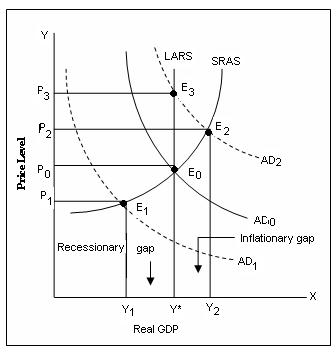Limitations Of Discretionary Fiscal Policy
Limitations Of Discretionary Fiscal Policy Assignment Help | Limitations Of Discretionary Fiscal Policy Homework Help
Limitations of Discretionary Fiscal Policy
Generally, it is believed that the discretionary fiscal policy is a very effective tool that the government can use for the stabilization of the economy. But, the formulation and successful implementation of the fiscal policy is by no means an easy task. The following are the major limitations of the discretionary fiscal policy:
(1) Information Lag: The government should have adequate and authentic data that is required to change taxes and government spending. It takes a long time to collect, classify, tabulate and analyze the data. The delays in the availability of reliable data may reduce the scope of fiscal policy.
(2) Policy Formulation Lag: Policy formulation process involves deliberations, consultations, negotiations etc., at so many levels. For example, formulation of budget in India involves the consultation of the Finance Minister with the representatives of industry, traders, farm-grows, exporters, service providers, trade unions, ministries and departments, etc. The budget documents has to be presented in the Parliament. Until and unless the finance bill is passed by the Parliament, the union government cannot spend a single rupee form the consolidated fund of India.
(3) Execution Lag: Even after the formulation of policy and taking decisions about certain changes in taxes and spending, there is still an execution lag, adding time between enactment and execution of the change. Even after implementation of the policy changes, it takes time to observe the effects of these changes on the economy.

The limitations of the fiscal policy could also be explained graphically, as shown in.
In initial equilibrium is at E0, where the economy is at potential GDP (Y*) and price level P0.
Suppose, the private sector decides to spend lesson investment. The fall in private investment spending shifts AD0 curve left-wards to AD1, lowering the GDP to Y1 and causing a recessionary gap of Y* - Y1.
The government decides for fiscal expansion, reducing the rate and increasing spending sot that AD1 curve may again shift back to AD0 In the meanwhile, if the private sector recovers and raises its investment spending, the AD1 curve may shift up to AD2, raising inflationary gap (Y2 -Y*). The government will have to make swift changes in the fiscal policy to restore the potential GDP.
The frequent and small changes in fiscal policy to stabiles the GDP almost precisely at its potential level is called fine tuning. As discussed earlier, various lags may appear in the formulation and execution of the fiscal policy or gross turning is needed to avoid.
For more help in Limitations of Discretionary Fiscal Policy click the button below to submit your homework assignment
(1) Information Lag: The government should have adequate and authentic data that is required to change taxes and government spending. It takes a long time to collect, classify, tabulate and analyze the data. The delays in the availability of reliable data may reduce the scope of fiscal policy.
(2) Policy Formulation Lag: Policy formulation process involves deliberations, consultations, negotiations etc., at so many levels. For example, formulation of budget in India involves the consultation of the Finance Minister with the representatives of industry, traders, farm-grows, exporters, service providers, trade unions, ministries and departments, etc. The budget documents has to be presented in the Parliament. Until and unless the finance bill is passed by the Parliament, the union government cannot spend a single rupee form the consolidated fund of India.
(3) Execution Lag: Even after the formulation of policy and taking decisions about certain changes in taxes and spending, there is still an execution lag, adding time between enactment and execution of the change. Even after implementation of the policy changes, it takes time to observe the effects of these changes on the economy.
The limitations of the fiscal policy could also be explained graphically, as shown in.
In initial equilibrium is at E0, where the economy is at potential GDP (Y*) and price level P0.
Suppose, the private sector decides to spend lesson investment. The fall in private investment spending shifts AD0 curve left-wards to AD1, lowering the GDP to Y1 and causing a recessionary gap of Y* - Y1.
The government decides for fiscal expansion, reducing the rate and increasing spending sot that AD1 curve may again shift back to AD0 In the meanwhile, if the private sector recovers and raises its investment spending, the AD1 curve may shift up to AD2, raising inflationary gap (Y2 -Y*). The government will have to make swift changes in the fiscal policy to restore the potential GDP.
The frequent and small changes in fiscal policy to stabiles the GDP almost precisely at its potential level is called fine tuning. As discussed earlier, various lags may appear in the formulation and execution of the fiscal policy or gross turning is needed to avoid.
For more help in Limitations of Discretionary Fiscal Policy click the button below to submit your homework assignment